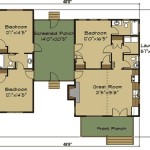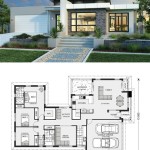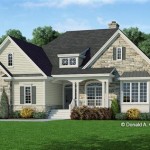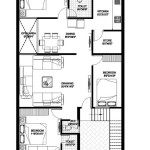Free Tiny Home Floor Plans: A Comprehensive Guide
The surge in popularity of tiny homes reflects a growing interest in minimalist living, financial freedom, and reduced environmental impact. One of the most crucial steps in realizing a tiny home dream is selecting or designing a floor plan. While custom designs can be expensive, a wealth of free tiny home floor plans are available online, offering a starting point for prospective tiny homeowners. These plans range in complexity and style, catering to diverse needs and preferences.
Navigating the world of free tiny home floor plans requires understanding the different types of plans available, the limitations of free resources, and the steps involved in adapting a free plan to individual requirements. This article provides a comprehensive overview of finding, evaluating, and utilizing free tiny home floor plans effectively.
Understanding the Scope of Free Tiny Home Plans
The term "free" can be misleading. While access to the basic floor plan may be free, it's essential to understand what the free offering includes and what it doesn't. Generally, free plans provide a schematic layout of the tiny home, including dimensions, room arrangements, and basic fixture placements. Detailed construction documents, material lists, and engineering specifications are rarely included in free offerings. These detailed elements are typically reserved for paid plans or require separate professional consultation. Therefore, think of free plans as a conceptual starting point rather than a complete build package.
Another aspect to consider is the origin of the plan. Free plans may be sourced from various places, including manufacturers promoting their products, independent designers offering introductory models, or repositories of user-submitted designs. The quality and accuracy of these plans can vary greatly. Verifying the credentials of the designer or source of the plan is crucial before committing to it.
Furthermore, understand that a free plan will likely need modifications to comply with local building codes and personal preferences. Building codes differ significantly across jurisdictions, and a plan that is compliant in one area may not be in another. Similarly, accessibility requirements, energy efficiency standards, and personal comfort considerations will necessitate adjustments to the original design.
Finding and Evaluating Free Tiny Home Floor Plans
The internet is the primary source for locating free tiny home floor plans. Numerous websites and platforms specialize in tiny home design, offering a selection of free plans alongside paid options. Search terms such as "free tiny house plans," "small house plans free," "free ADU plans," and "tiny home blueprints free" will yield a multitude of results. Be sure to filter your searches by size, style (e.g., modern, rustic, traditional), and features (e.g., loft, ground-floor bedroom, composting toilet) to narrow down the options.
Once you have a list of potential plans, the evaluation process begins. The first step is to carefully review the plan's documentation, if any exists. Even with free plans, some designers provide basic specifications or notes on construction. These details can provide valuable insights into the plan's feasibility and potential challenges. Look for information on wall framing, roofing systems, window and door sizes, and plumbing and electrical layouts. Absence of such information should raise a red flag.
Next, assess the plan's suitability for your intended use. Consider factors such as:
Size and Layout:
Does the size of the tiny home fit your needs and the available space on your property? Is the layout functional and comfortable for your lifestyle? Pay close attention to the placement of the kitchen, bathroom, and sleeping areas.Storage:
Tiny homes require creative storage solutions. Evaluate the amount of built-in storage in the plan and consider whether it is sufficient for your belongings.Natural Light:
Adequate natural light is essential for making a small space feel larger and more comfortable. Assess the number and size of windows in the plan.Accessibility:
If you or anyone who will be living in the tiny home has mobility issues, consider the accessibility of the design. Look for features such as wide doorways, ramps, and accessible bathrooms.Expandability:
If you anticipate needing more space in the future, consider a plan that can be easily expanded or modified.
Finally, critically evaluate the plan's structural integrity and compliance with building codes. While free plans may not include detailed engineering specifications, you can assess the plan's basic design principles. Look for features such as properly sized structural members, adequate bracing, and appropriate roof slopes. It is strongly recommended to consult with a qualified builder or structural engineer to review the plan and ensure its compliance with local building codes before commencing construction. This step is crucial to avoid costly mistakes and ensure the safety of the structure.
Adapting a Free Plan to Your Specific Needs
Rarely will a free tiny home plan perfectly match your requirements. Adapting a plan to your specific needs involves several steps, from modifying the layout to incorporating sustainable features.
The first step is to identify the areas of the plan that need to be adjusted. This may involve making changes to the room sizes, rearranging the layout, adding or removing features, or modifying the exterior design. Use a CAD program or even simple sketching tools to visualize the proposed changes. Consider the implications of each change on the overall design and structural integrity of the tiny home.
Next, focus on adapting the plan to your local building codes. Contact your local building department to obtain a copy of the applicable codes and regulations. Pay close attention to requirements for foundation design, wall framing, roofing, plumbing, electrical, and fire safety. Consult with a qualified builder or architect to ensure that your modified plan complies with all applicable codes.
Incorporating sustainable features into the plan is another crucial consideration. Tiny homes are often associated with eco-friendly living, and adapting the plan to maximize energy efficiency and reduce environmental impact is a worthy goal. Some options for maximizing sustainability include:
Energy-Efficient Windows and Doors:
Selecting windows and doors with low U-values and high solar heat gain coefficients can significantly reduce energy consumption.Insulation:
Properly insulating the walls, roof, and floor of the tiny home is essential for maintaining a comfortable indoor temperature and reducing heating and cooling costs. Consider using sustainable insulation materials such as recycled denim, sheep's wool, or cellulose.Solar Panels:
Integrating solar panels into the roof design can provide a renewable source of electricity.Rainwater Harvesting:
Collecting rainwater for non-potable uses, such as watering plants or flushing toilets, can conserve water resources.Composting Toilet:
A composting toilet can reduce water consumption and eliminate the need for a traditional septic system.
Finally, consider incorporating personal design touches to make the tiny home your own. This might involve selecting unique finishes, adding custom cabinetry, or incorporating salvaged materials. Personalizing the design can transform a generic free plan into a truly unique and comfortable living space. Remember to balance aesthetic considerations with functionality and practicality.
In summary, free tiny home floor plans offer a valuable resource for those embarking on the journey of tiny homeownership. By approaching these resources with a critical eye and understanding the limitations of free offerings, prospective tiny homeowners can leverage these plans as a foundation for creating a customized and sustainable living space. The key lies in thorough evaluation, meticulous adaptation, and professional consultation to ensure a safe, compliant, and ultimately satisfying tiny home experience.

27 Adorable Free Tiny House Floor Plans Small

27 Adorable Free Tiny House Floor Plans Small

27 Adorable Free Tiny House Floor Plans Craft Mart

Tiny House Floor Plans 32 Home On Wheels Design

Pin On Info

Custom Granny S Tiny House Plans 24 X27 1 Bed Bath Room With Free Original Cad File Get This Offer Before End

Free Tiny House Building Plans Marjolein In Het Klein

Free Shed Tiny House Floor Plan Release

Free Tumbleweed Diy Tiny House Plans Houses

11 Delightful And Free Tiny House Plans To Floor








